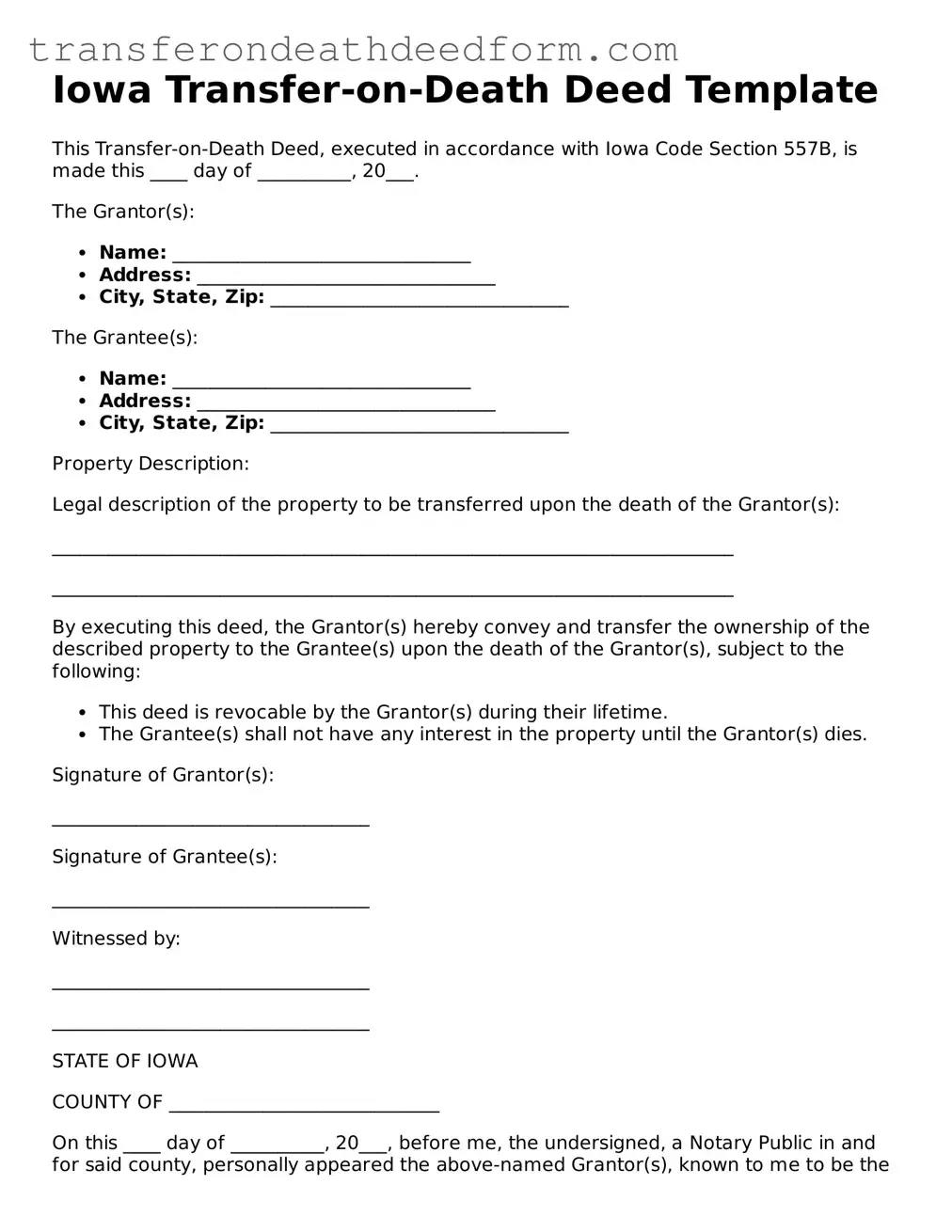Iowa Transfer-on-Death Deed Template
This Transfer-on-Death Deed, executed in accordance with Iowa Code Section 557B, is made this ____ day of __________, 20___.
The Grantor(s):
- Name: ________________________________
- Address: ________________________________
- City, State, Zip: ________________________________
The Grantee(s):
- Name: ________________________________
- Address: ________________________________
- City, State, Zip: ________________________________
Property Description:
Legal description of the property to be transferred upon the death of the Grantor(s):
_________________________________________________________________________
_________________________________________________________________________
By executing this deed, the Grantor(s) hereby convey and transfer the ownership of the described property to the Grantee(s) upon the death of the Grantor(s), subject to the following:
- This deed is revocable by the Grantor(s) during their lifetime.
- The Grantee(s) shall not have any interest in the property until the Grantor(s) dies.
Signature of Grantor(s):
__________________________________
Signature of Grantee(s):
__________________________________
Witnessed by:
__________________________________
__________________________________
STATE OF IOWA
COUNTY OF _____________________________
On this ____ day of __________, 20___, before me, the undersigned, a Notary Public in and for said county, personally appeared the above-named Grantor(s), known to me to be the same person(s) whose names are subscribed to the within instrument, and acknowledged that they executed the same as their free and voluntary act and deed.
______________________________________
Notary Public
My commission expires: ________________
